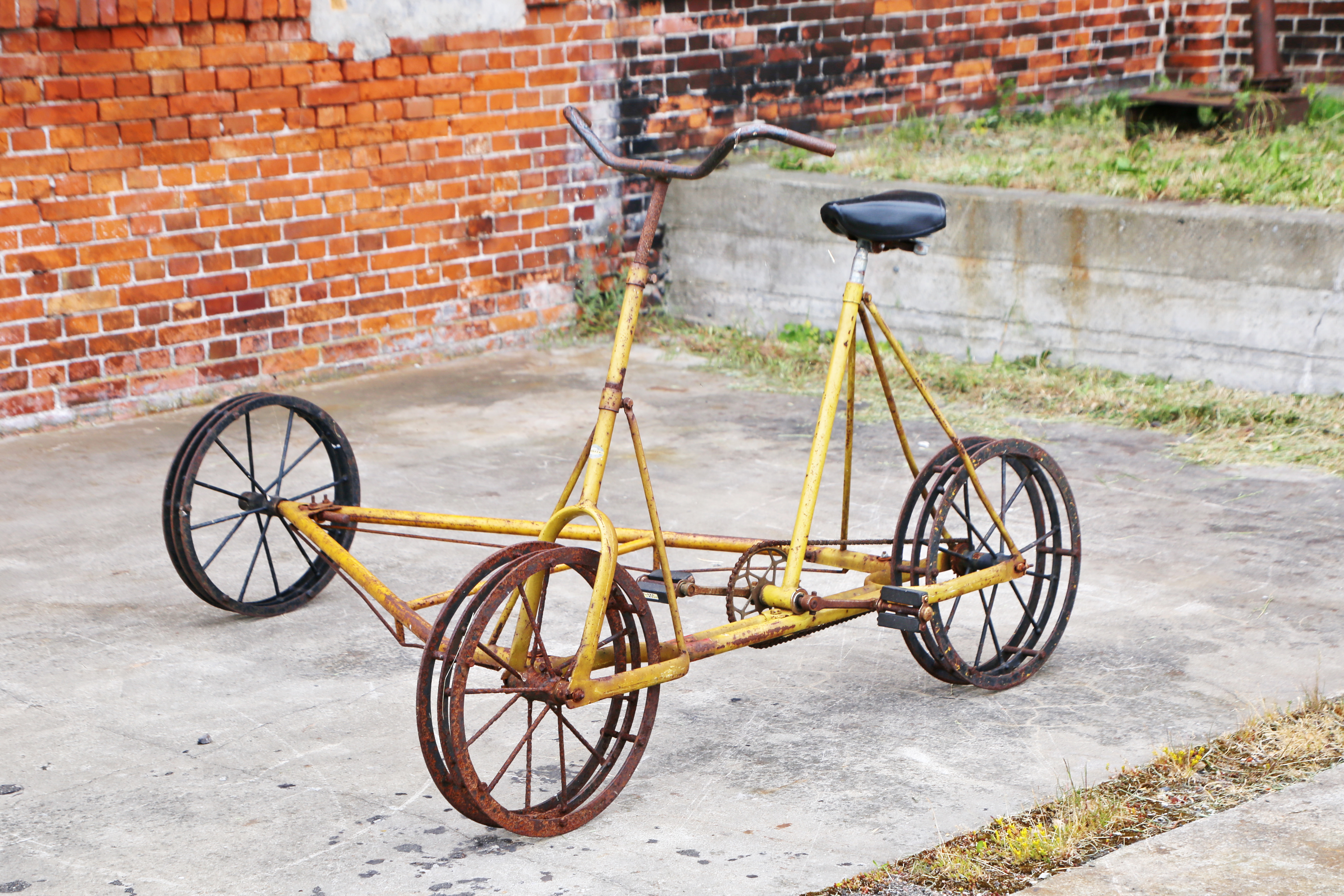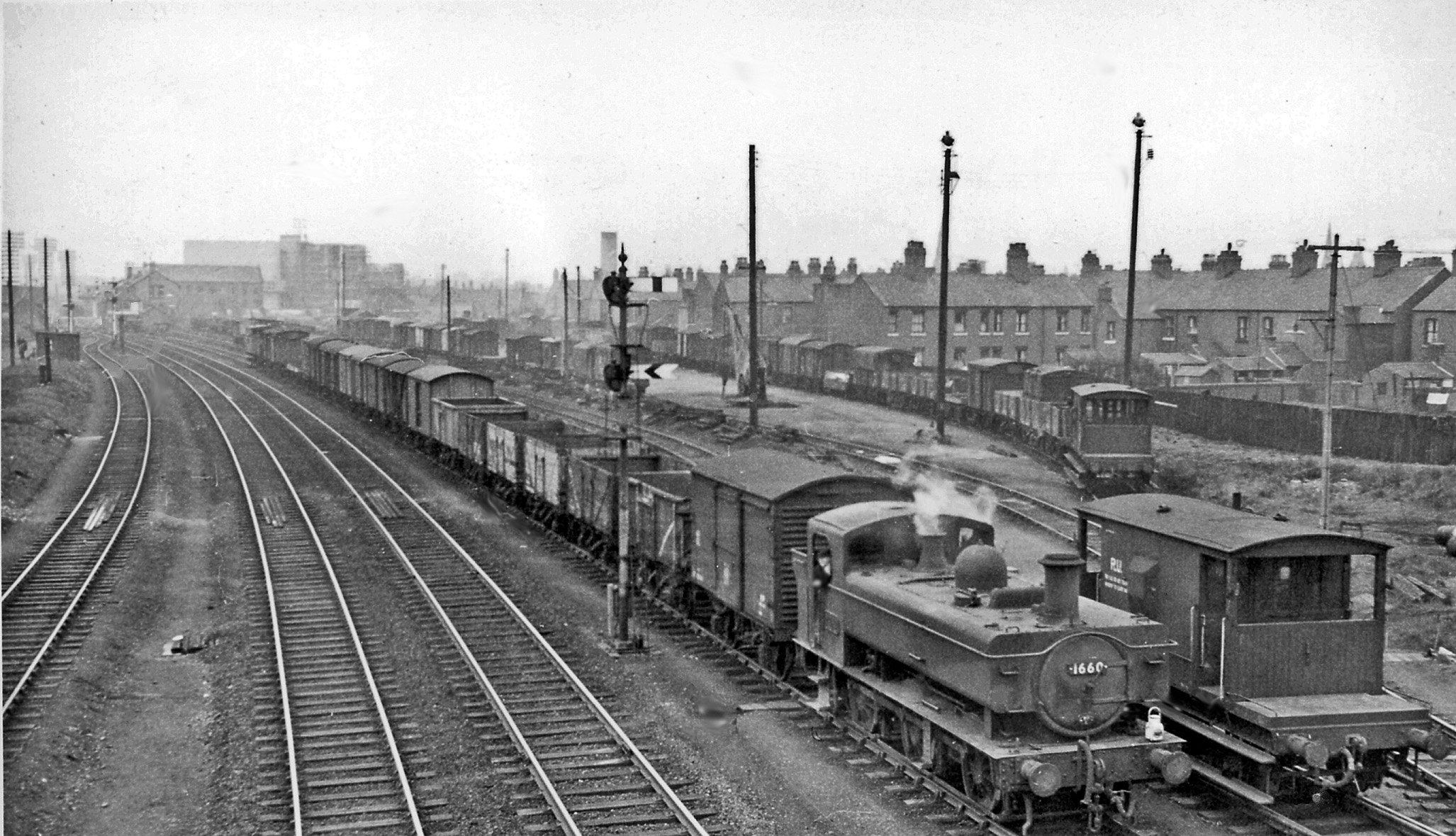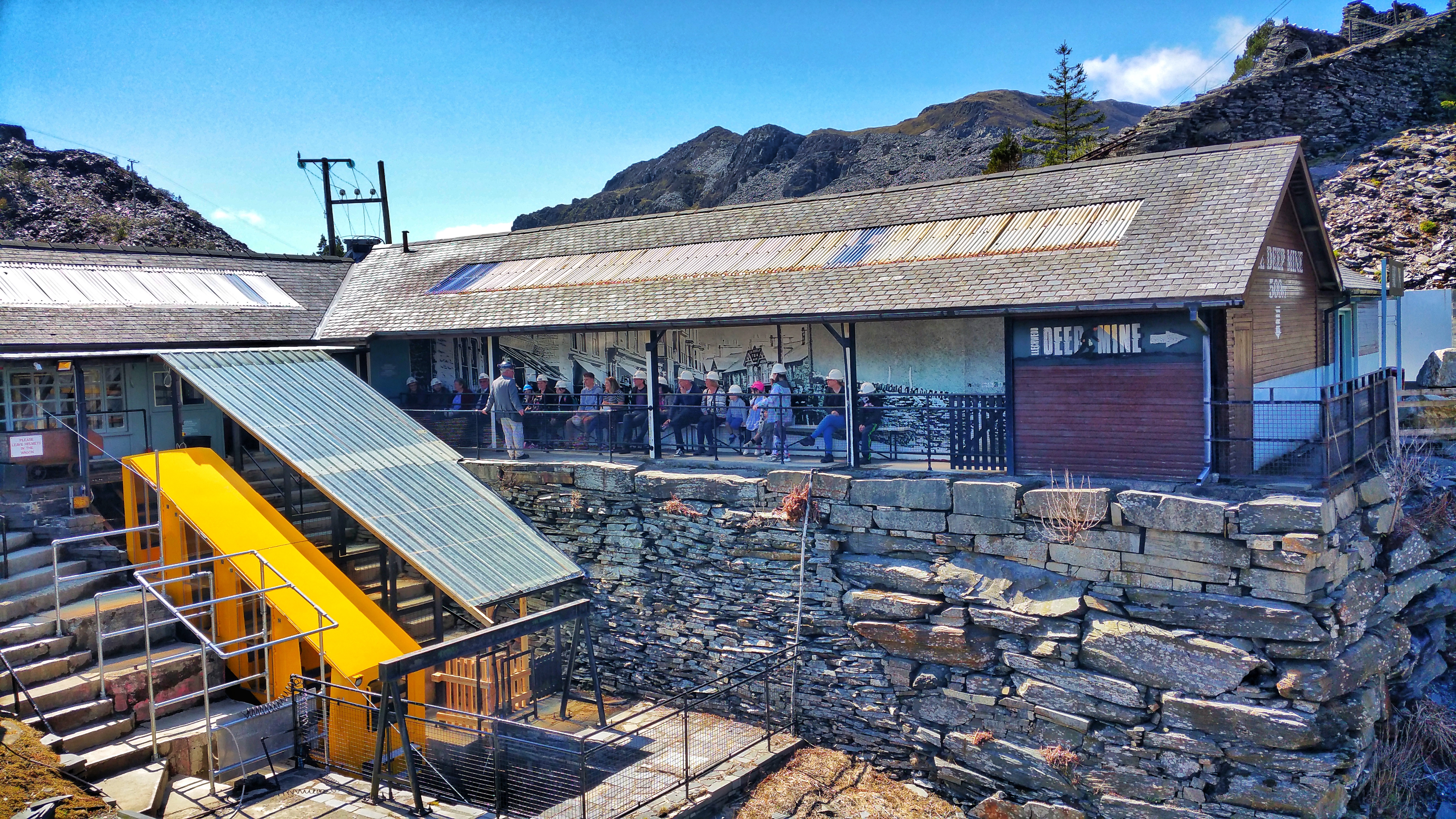|
Tan-y-Manod Railway Station
Tan-y-Manod railway station was a railway station approximately south of , in Gwynedd (formerly ''Merionethshire''), North Wales. History Narrow gauge days The station was on the narrow gauge Festiniog and Blaenau Railway (F&BR); it opened with the line on 30 May 1868. The F&BR ran the three and a half route miles from its southern terminus at Llan Ffestiniog to a junction with the Ffestiniog Railway (FR) at Dolgarregddu Junction near what is nowadays Blaenau Ffestiniog station. The station site served three purposes: * a passenger station, whose main but not sole traffic was quarrymen travelling to and from work * a passing loop, and * a place where inclines from slate quarries met the F&BR In common with all other F&BR stations there were no platforms, carriages were very low to the ground, so passengers boarded from and alighted to the trackside. The station had a single-storey building on the eastern, outer, side of the sharply curving track. No details of its f ... [...More Info...] [...Related Items...] OR: [Wikipedia] [Google] [Baidu] |
Blaenau Ffestiniog
Blaenau Ffestiniog is a town in Gwynedd, Wales. Once a slate mining centre in historic Merionethshire, it now relies much on tourists, drawn for instance to the Ffestiniog Railway and Llechwedd Slate Caverns. It reached a population of 12,000 at the peak development of the slate industry, but fell with the decline in demand for slate. The population of the community, including the nearby village Llan Ffestiniog, was 4,875 in the 2011 census: the fourth most populous in Gwynedd after Bangor, Caernarfon and Llandeiniolen. The population not including Llan is now only about 4,000. Etymology and pronunciation The meaning of Blaenau Ffestiniog is "uplands of Ffestiniog". The Welsh word ' is the plural of ' "upland, remote region". Ffestiniog here is probably "territory of Ffestin" (Ffestin being a personal name) or could possibly mean "defensive place". The English pronunciation of Blaenau Ffestiniog suggested by the ''BBC Pronouncing Dictionary of British Names'' is , but the f ... [...More Info...] [...Related Items...] OR: [Wikipedia] [Google] [Baidu] |
Bala And Festiniog Railway
The Bala and Festiniog Railway was a , standard gauge, railway backed by the Great Western Railway (GWR) in north-west Wales. It connected Bala with Blaenau Ffestiniog. History The railway originally connected Bala with Llan Ffestiniog. It was incorporated on 28 July 1873 and opened on 1 November 1882. In 1883 the line was extended by converting the existing Festiniog and Blaenau Railway between Llan Ffestiniog and Blaenau Ffestiniog from gauge to standard gauge. The line terminated at Blaenau Ffestiniog (GWR) where until 1939 it connected with the Ffestiniog Railway to Porthmadog. At , the line connected with the Ruabon to Barmouth GWR line. The Bala and Festiniog was vested in the Great Western Railway on 1 July 1910. On nationalisation in 1948 management of the line passed to the Western Region of British Railways. The line closed to passengers in 1960 and to freight in 1961. An unusual feature of freight operation on the line was the carriage of gauge slate ... [...More Info...] [...Related Items...] OR: [Wikipedia] [Google] [Baidu] |
Daily Post (North Wales)
The ''Daily Post'' is a daily newspaper for the North Wales region of Wales. Its website is branded ''North Wales Live''. The newspaper gained independence from the ''Liverpool Daily Post'' in 2003 which later ceased production in December 2013. ABC data from 2021 notes the paper has a circulation of 12,478. It was based on Vale Road, Llandudno Junction, from 2001 to 2017. In May 2017, it moved to its new and current base at Bryn Eirias on Colwyn Bay Colwyn Bay ( cy, Bae Colwyn) is a town, community and seaside resort in Conwy County Borough on the north coast of Wales overlooking the Irish Sea. It lies within the historic county of Denbighshire. Eight neighbouring communities are incorpo ...’s Abergele Road. References {{UK regional daily newspapers Reach plc Mass media in Wales Newspapers published in Wales Daily newspapers published in the United Kingdom 2003 establishments in Wales ... [...More Info...] [...Related Items...] OR: [Wikipedia] [Google] [Baidu] |
Radstock
Radstock is a town and civil parish on the northern slope of the Mendip Hills in Somerset, England, about south-west of Bath and north-west of Frome. It is within the area of the unitary authority of Bath and North East Somerset. The Radstock built-up area had a population of 9,419 at the 2011 Census. Radstock has been settled since the Iron Age, and its importance grew after the construction of the Fosse Way, a Roman road. The town grew after 1763, when coal was discovered in the area. Large numbers of mines opened during the 19th century, including several owned by the Waldegrave family, who had been Lords of the Manor since the Civil War. Admiral Lord Radstock, brother of George, fourth Earl Waldegrave, took the town's name as his title when created a Baron. The spoil heap of Writhlington colliery is now the Writhlington Site of Special Scientific Interest, which includes 3,000 tons of Upper Carboniferous spoil from which more than 1,400 insect fossil specim ... [...More Info...] [...Related Items...] OR: [Wikipedia] [Google] [Baidu] |
London
London is the capital and largest city of England and the United Kingdom, with a population of just under 9 million. It stands on the River Thames in south-east England at the head of a estuary down to the North Sea, and has been a major settlement for two millennia. The City of London, its ancient core and financial centre, was founded by the Romans as '' Londinium'' and retains its medieval boundaries.See also: Independent city § National capitals The City of Westminster, to the west of the City of London, has for centuries hosted the national government and parliament. Since the 19th century, the name "London" has also referred to the metropolis around this core, historically split between the counties of Middlesex, Essex, Surrey, Kent, and Hertfordshire, which largely comprises Greater London, governed by the Greater London Authority.The Greater London Authority consists of the Mayor of London and the London Assembly. The London Mayor is distinguished fr ... [...More Info...] [...Related Items...] OR: [Wikipedia] [Google] [Baidu] |
Draisine
A draisine () is a light auxiliary rail vehicle, driven by service personnel, equipped to transport crew and material necessary for the maintenance of railway infrastructure. The eponymous term is derived from the German inventor Baron Karl Drais, who invented his ''Laufmaschine'' (German for "running machine") in 1817, which was called ''Draisine'' in German (''vélocipède'' or ''draisienne'' in French) by the press. It is the first reliable claim for a practically used precursor to the bicycle, basically the first commercially successful two-wheeled, steerable, human-propelled machine, nicknamed hobby-horse or dandy horse. Later, the name draisine came to be applied only to the invention used on rails and was extended to similar vehicles, even when not human-powered. Because of their low weight and small size, they can be put on and taken off the rails at any place, allowing trains to pass. In the United States, motor-powered draisines are known as speeders while human- ... [...More Info...] [...Related Items...] OR: [Wikipedia] [Google] [Baidu] |
Trawsfynydd Nuclear Power Station
Trawsfynydd nuclear power station ( cy, Atomfa Trawsfynydd) is a decommissioned Magnox nuclear power station situated in Snowdonia National Park in Gwynedd, Wales. The plant, which became operational in 1965, was the only nuclear power station in the UK to be built inland, with cooling water that was taken from the man-made Llyn Trawsfynydd reservoir which also supplies the hydro-electric Maentwrog power station. It was closed in 1991. Its planned decommissioning by Magnox Ltd was expected to take almost 100years, but in 2021 the Welsh government arranged for the power station to be redeveloped using small-scale reactors. History The power station, which takes its name from the nearby village of Trawsfynydd, was designed by Basil Spence. The construction, which was undertaken by a consortium involving Crompton Parkinson, International Combustion, Fairey Engineering and Richardsons Westgarth, and known as the Atomic Power Constructions (APC), began in July 1959, and both of the ... [...More Info...] [...Related Items...] OR: [Wikipedia] [Google] [Baidu] |
Croes Newydd
Croes Newydd was a large steam locomotive shed, marshalling yard and junction in Wrexham, in Wales. History The Wrexham and Minera Railway was opened on 22 May 1862, with little ceremony except a note from the Traffic Manager of the Great Western Railway stating that from that date all traffic on that line would be invoiced to or from Croesnewydd station instead of Wheatsheaf. This new station was a goods station "situated at the side of the highway leading from Croesnewydd to the Ruthin Road a short distance from the canal". Six sidings were provided here able to accommodate hundreds of wagons, and dealing with the weighing of goods from several collieries, the Minera limeworks, Broughton Hall iron works, Brymbo furnaces and other goods on the line. Wrexham's Croes Newydd locomotive shed was the last of the GWR 'northlight' designs, being a roundhouse and depending on a central turntable for access. It was built by the Great Western Railway and opened in 1902, to replace ou ... [...More Info...] [...Related Items...] OR: [Wikipedia] [Google] [Baidu] |
Llechwedd Slate Caverns
Llechwedd () is a visitor attraction near Blaenau Ffestiniog, Gwynedd, Wales. It details the history of slate quarrying in the town and specifically the Llechwedd quarry in which it is located. The main aspect of Llechwedd is its Llechwedd Deep Mine Tour which has the steepest narrow gauge railway in the UK and travels over 500 feet underground to the disused slate caverns, and the Quarry Explorer Tour which heads out to the furthest reaches of the Llechwedd site to explore the history of mining in the area. The attraction also incorporates Mountain biking tracks, Zip-lines and giant underground trampolines. Bounce Below is right beside the underground zip wire, Zip World Caverns and Zip World Titan - the longest zip course in Europe. History The narrow gauge Miners' Tramway, opened in 1972 under the name "Quarry Tours", was a railway travelling 800 metres underground. The trains were hauled by battery-electric locomotives and travelled through tunnels and into a series o ... [...More Info...] [...Related Items...] OR: [Wikipedia] [Google] [Baidu] |
London And North Western Railway
The London and North Western Railway (LNWR, L&NWR) was a British railway company between 1846 and 1922. In the late 19th century, the L&NWR was the largest joint stock company in the United Kingdom. In 1923, it became a constituent of the London, Midland and Scottish (LMS) railway, and, in 1948, the London Midland Region of British Railways: the LNWR is effectively an ancestor of today's West Coast Main Line. History The company was formed on 16 July 1846 by the amalgamation of the Grand Junction Railway, London and Birmingham Railway and the Manchester and Birmingham Railway. This move was prompted, in part, by the Great Western Railway's plans for a railway north from Oxford to Birmingham. The company initially had a network of approximately , connecting London with Birmingham, Crewe, Chester, Liverpool and Manchester. The headquarters were at Euston railway station. As traffic increased, it was greatly expanded with the opening in 1849 of the Great Hall, designed by P ... [...More Info...] [...Related Items...] OR: [Wikipedia] [Google] [Baidu] |
Railway Turntable
In rail terminology, a railway turntable or wheelhouse is a device for turning railway rolling stock, usually locomotives, so that they can be moved back in the direction from which they came. Naturally, it is especially used in areas where economic considerations or a lack of sufficient space have served to weigh against the construction of a turnaround wye. In the case of steam locomotives, railways needed a way to turn the locomotives around for return trips as their controls were often not configured for extended periods of running in reverse and in many locomotives the top speed was lower in reverse motion. In the case of diesel locomotives, though most can be operated in either direction, they are treated as having "front ends" and "rear ends" (often determined by reference to the location of the crew cab). When operated as a single unit, the railway company often prefers, or requires, that a diesel locomotive is run "front end" first. When operated as part of a multiple ... [...More Info...] [...Related Items...] OR: [Wikipedia] [Google] [Baidu] |
Water Crane
A water crane is a device used for delivering a large volume of water into the tank or tender of a steam locomotive. The device is also called a water column in the United States and Australia. As a steam locomotive consumes large quantities of water, water cranes were a vital part of railway station equipment, often situated at the end of a platform, so that water could be refilled during a stop at the station. Overview Generally, water cranes consist of an upright steel pipe about in diameter with a horizontal, pivoting pipe connected to its upper end so as to form a swinging arm. The swinging arm is usually designed to rest parallel to the rails when not in use. Water cranes may be able to deliver up to of water per minute. Water supply In hilly country, natural streams can be dammed and water fed by gravity to the water crane. In flatter country this arrangement is not always possible, so water may be supplied by a tank next to the crane. Water tanks may vary in volume fro ... [...More Info...] [...Related Items...] OR: [Wikipedia] [Google] [Baidu] |
.jpg)





